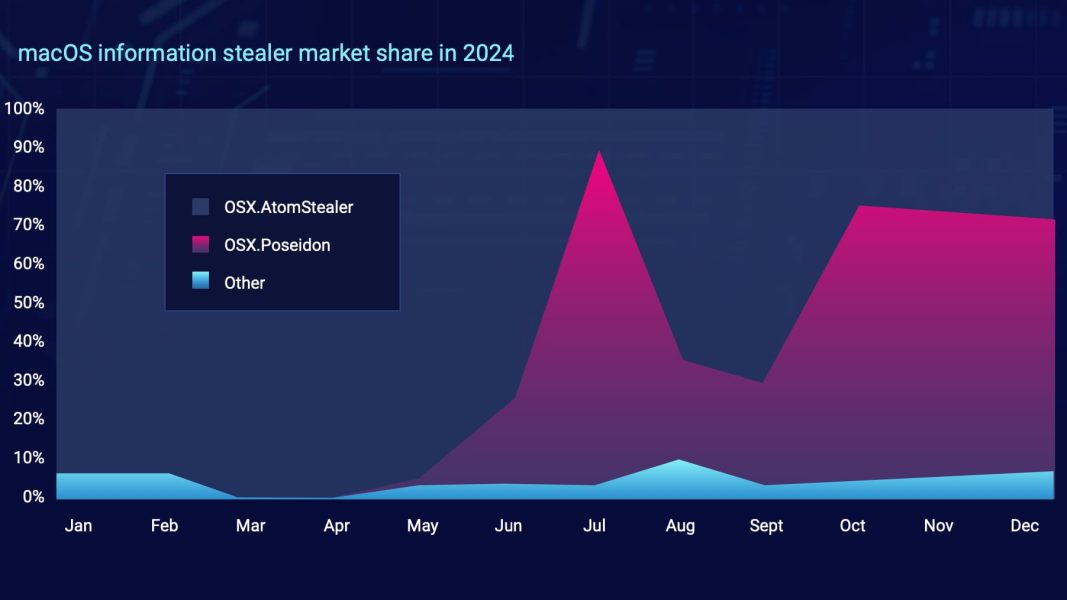New Research Led by James Hansen Documents Global Warming Acceleration – InsideClimate News

WASHINGTON, DC - MARCH 13: Atmospheric physicist and Columbia University Earth Institute adjunct professor James Hansen testifies before the Senate Foreign Relations Committee during a hearing about the proposed Keystone XL pipeline project in the Dirksen Senate Office Building on Capitol Hill March 13, 2014 in Washington, DC. The committee heard testimony from proponents and opponents of the pipeline, which would carry tar sands oil from Canada to the United States for production and refinery. (Photo by Chip Somodevilla/Getty Images)
New research by an international team of climate scientists documents a surge of global warming during the past 15 years that risks shutting down a key ocean current by 2050. During a webinar Tuesday discussing the study, the authors said the rate of global warming since 2010 has increased by more than 50 percent over the rate of warming in the preceding four decades, surging more than 0.7 degrees Fahrenheit (0.4 degrees Celsius) in just the past two years.At the current rate, the Paris Agreement goal of limiting global warming to somewhere between 2.7 degrees and 3.6 degrees Fahrenheit (1.5-2 degrees Celsius) is pretty much dead, said James Hansen, a former NASA climate scientist who led the team and whose 1988 testimony to Congress was one of the early public warnings about the risks of greenhouse gas emissions.Please take a look at the new openings in our newsroom.The increased rate of warming will intensify already deadly heatwaves and worsen both drought and flooding extremes, as well as speed up the spread of deadly diseases associated with warmer temperatures. The shutdown of the Atlantic Meridional Overturning Current (AMOC) discussed in the new paper would lead to a sudden surge of sea level rise along the East Coast, and bring crop-threatening climate extremes to parts of Europe, according to a 2024 study.Scientists expected the global average temperature to start dropping this winter because parts of the tropical Pacific Ocean are in La Niña conditions, the cool phase of a cycle that can reduce the annual global average temperature by up to 0.36 degrees Fahrenheit. Instead, temperatures continued to surge into 2025 with the warmest January on record—3.13 degrees Fahrenheit (1.74 degrees Celsius) above the pre-industrial baseline. Researchers have noted how the sustained warmth is unexpected. January 2025 was quite unexpectedly the warmest January on record at 1.75C above preindustrial, beating the prior record set in 2024.
This is despite the presence of La Niña conditions in the tropical Pacific, with the El Niño event of 2023/2024 long faded. www.theclimatebrink….[image or embed]As in other papers he published recently, Hansen said the new findings affirm that a key driver of the warming is the reduction of sulfate aerosol pollution over Northern Hemisphere oceans. That change, due to stricter shipping fuel regulations, has the effect of dimming the reflectivity of clouds and allowing more heat to reach the surface of the Earth.Other research looking at the remarkable 0.7-degree Fahrenheit rise of the past two years found that the spike could be attributed to a combination of causes in addition to aerosol reductions, including a Pacific Ocean warm phase and decadal shifts of large-scale pressure patterns.Global warming is most pronounced in the Arctic, and that is melting a lot more ice and sending more freshwater into the North Atlantic than currently estimated by most climate models, Hansen said. That inflow of water could have dire consequences, particularly for the ocean current that warms much of Western Europe. A “shutdown of the Atlantic Meridional Overturning Circulation (AMOC) is likely within the next 20-30 years, unless actions are taken to reduce global warming,” the researchers wrote. Their warning about AMOC contradicts the conclusions of the Intergovernmental Panel on Climate Change (IPCC), they added.The IPCC is the United Nations entity charged with assessing climate science and exploring policy options, and its most recent global assessment, in 2021, concluded that the AMOC will slow in a warming climate, but did not find it likely the current would shut down this century.The AMOC is “the ocean conveyor that carries a huge amount of heat into the Northern Hemisphere,” Hansen said Tuesday. “If it shuts down, the heat stays in the Southern Hemisphere and will lock in many meters of sea level rise.”“We can adapt to more extreme heat waves, droughts, storms and floods, and minimize their impact,” he said. “But the main issue is the sleeping giant, the point of no return, the danger of an AMOC shutdown and large sea level rise.” The IPCC fell short of adequately warning the public about this “point of no return” by ruling that an AMOC shutdown is not likely this century, Hansen said. The panel rejected a 2015 paper with an AMOC shutdown warning, he noted, because it showed too much freshwater from melted Arctic ice flowing into the Atlantic.“But now, surely, ice melt will accelerate,” he said. “Warmer Pacific water is beginning to flow over the Aleutian shelf into the Arctic Ocean surface layer. And in the North Atlantic, warmer water is invading under the sea ice and under Greenland ice shelves.”Earth history shows that such ocean warming can lead to rapid loss of sea ice at both poles, he said, and sea level can rise several meters within a century during times of rapid warming.“We must understand this situation better,” he said. “Models used by the IPCC are not realistic.”“The main issue is the sleeping giant, the point of no return, the danger of an AMOC shutdown and large sea level rise.” Andrej Mahecic, head of media and communications with the IPCC, said the panel doesn’t comment on individual studies. “The IPCC assesses the science that has been published on climate change,” he said. “For each report, there are cut-off dates for publications to be considered in an assessment.”Other scientists, who say they generally respect Hansen’s work, disagree with his conclusions on aerosols and the acceleration of global warming. Bob Kopp, a climate and sea level researcher at Rutgers University, posted Tuesday on Bluesky that Hansen is “just flat wrong” to make sea level rise projections based on the assumption that we’re already in an era of exponentially rising polar ice loss. The most current calculations of ice mass loss don’t support those projections, he said.And climate scientist Michael Mann, director of the Center for Science, Sustainability & the Media at the University of Pennsylvania, responded to previous research by Hansen about the reduction of aerosol pollution accelerating warming of the oceans by noting that the recent two-year global temperature increase is within the range of warming projected by models. Jeffrey Sachs, president of the United Nations’ Sustainable Development Solutions Network, hosted Tuesday’s webinar about the research. He said he’s spoken with hundreds of climate scientists, and none of them has been more consistently correct with long-range climate projections than Hansen. While still with NASA and after his retirement, Hansen also participated in climate activism and was arrested several times for protesting fossil fuel development projects.“Jim, you’ve scared the wits out of me for 25 years as your colleague, because you’ve told me consistently, ‘It’s worse than we think, and it’s accelerating more rapidly,’” he said during the discussion. “You warned us what was coming. This new paper is dramatic. Its implications are global. It must be heard by everybody.”Sachs also said that, in addition to a climate problem, the world has political problems, “with leaders in the United States and other countries for whom ‘drill, baby drill’ is the predominant ethos and policy.”“It’s an absolutely immoral reality we’re facing … an utter political disaster of the whole Earth being in the hands of a few greedy interests,” he said. “They happen to buy politics. They happen to buy leaders, they happen to own states.”In that world, he added, various strategies for addressing global warming, like carbon taxes or geoengineering, “don’t solve the fundamental problem, which is that the world is not governed by even the most basic ethical standards of survival, decency and respect for young people and for future generations.”Kevin Anderson, a professor of energy and climate change at theUniversity of Manchester in the United Kingdom, who was not involved in the new paper, also emphasized that it’s important to look at the science within the political context.“Otherwise it’s just an interesting academic discussion,” he said.“Whether we align with the more conservative forecasts of the IPCC or the more challenging warnings of Jim Hansen, the policy implications are strikingly similar,” he said. “We are rapidly blasting through the 1.5-degree Celsius commitment.”The IPCC’s path to stay well below 2 degrees Celsius of warming requires 7 percent emissions cuts annually worldwide, starting now, he said, which would be an even bigger drop than occurred during COVID lockdowns.“In this context, the policy process has abdicated its responsibilities, opting instead for short-term acquiescence with business as usual, rather than offering strong, transparent and cogent leadership,” Anderson said. “After decades of half-truths, delusion and outright lies from those in positions of power, and often from their advisers as well, we now find ourselves facing severe risks of disastrous outcomes.”Our nonprofit newsroom provides award-winning climate coverage free of charge and advertising. We rely on donations from readers like you to keep going. Please donate now to support our work.Much climate damage has already been done, he added, mostly to people who didn’t cause the problem.“We are not sleepwalking into the apocalypse, we’re charging toward it with full awareness of what’s at stake,” he said. “Even more damning, we can already see the devastating effects of our actions tearing apart the livelihoods, and even the lives, of vulnerable, often poor, low-emitting communities far from the high-emitting areas where we live, and frequently comprised of people of colour.”In the Northern Hemisphere, the new study may have identified the reduction of aerosols and associated cloud changes as an important driver of the recent warming spike, but the Southern Hemisphere has also warmed, and aerosols are not likely the cause, said Kevin Trenberth, distinguished scholar with the National Center for Atmospheric Research and an honorary academic with the department of physics at University of Auckland in New Zealand.“Hansen has never not been political and has his own, often unproven views,” Trenberth said. “Changes in the Northern Hemisphere may well be enhanced by fewer pollutants … but the biggest changes are in the Southern Hemisphere and guaranteed not from that cause.”He said he has new research in the works focusing on big changes in atmospheric circulation and ocean currents.“My impression is that the ocean has warmed to a point where it matters,” he said. “The ocean stores most of the excess heat from global warming.”While he agrees with recent assessments that recent warming is within the range of modeled projections, something happened from 2023 into January 2025, and scientists still don’t know exactly what.Climate scientist Jonathan Overpeck, a professor of environmental education at the University of Michigan’s School for Environment and Sustainability, said he’s not surprised that warming is accelerating.“There are many amplifying positive feedbacks in the climate system that could come into play, and there have been changes in forcing that likely increased the rate of the climate change as well,” he said, adding that air pollution from ships acted “against the warming to a small degree.”He said the big jump in record warm global temperatures in 2023, followed by an even warmer year in 2024, strongly suggests that the rate of climate change is accelerating, although uncertainty in how global temperatures are measured keeps the evidence from being crystal clear. “If we don’t start phasing out the use of fossil fuels, climate change, and not just the warming, will get much more costly,” he said. “Weather and climate disasters of the type we’re already seeing more of will continue to get a lot worse.”Perhaps you noticed: This story, like all the news we publish, is free to read. That’s because Inside Climate News is a 501c3 nonprofit organization. We do not charge a subscription fee, lock our news behind a paywall, or clutter our website with ads. We make our news on climate and the environment freely available to you and anyone who wants it.That’s not all. We also share our news for free with scores of other media organizations around the country. Many of them can’t afford to do environmental journalism of their own. We’ve built bureaus from coast to coast to report local stories, collaborate with local newsrooms and co-publish articles so that this vital work is shared as widely as possible.Two of us launched ICN in 2007. Six years later we earned a Pulitzer Prize for National Reporting, and now we run the oldest and largest dedicated climate newsroom in the nation. We tell the story in all its complexity. We hold polluters accountable. We expose environmental injustice. We debunk misinformation. We scrutinize solutions and inspire action.Donations from readers like you fund every aspect of what we do. If you don’t already, will you support our ongoing work, our reporting on the biggest crisis facing our planet, and help us reach even more readers in more places? Please take a moment to make a tax-deductible donation. Every one of them makes a difference.Thank you,David Sassoon
Founder and PublisherVernon Loeb
Executive EditorBob Berwyn an Austria-based reporter who has covered climate science and international climate policy for more than a decade. Previously, he reported on the environment, endangered species and public lands for several Colorado newspapers, and also worked as editor and assistant editor at community newspapers in the Colorado Rockies.We deliver climate news to your inbox like nobody else. Every day or once a week, our original stories and digest of the web’s top headlines deliver the full story, for free.Crevasses are widening faster as meltwater drives fissures deeper into the ice and lubricates the base of glaciers, increasing concerns about how quickly their melting will raise sea levels.By Bob BerwynICN provides award-winning climate coverage free of charge and advertising. We rely on donations from readers like you to keep going.





